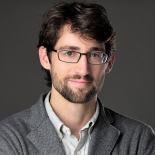Digital classroom: Vanished urban landscapes
 This winter, I had the pleasure of teaching a new course at UQÀM: HIS490C, La ville nord-américaine dans tous ces états. This class, of my own devising, was intended to introduce students to the history of the North American city from the colonial period through to the present, by ranging over a variety of major themes: the urban environment, migrations and ethnicity, suburbs and decentralization, sex and gender, among others.
This winter, I had the pleasure of teaching a new course at UQÀM: HIS490C, La ville nord-américaine dans tous ces états. This class, of my own devising, was intended to introduce students to the history of the North American city from the colonial period through to the present, by ranging over a variety of major themes: the urban environment, migrations and ethnicity, suburbs and decentralization, sex and gender, among others.
Because we were a small group, 14 enrolled students and 2 auditors, we were able to incorporate substantial discussion into a class that might normally be in a lecture-only format. I was also able to experiment a bit when it came to term work. Early on, we decided to develop a collective research blog around the theme of vanished urban landscapes in Montreal. In doing so, we were inspired by the book and museum exhibit Quartiers disparus, which tracked several working-class Montreal neighbourhoods that were demolished entirely or in part at the height of urban renewal in the 1960s. Using oral histories and photograph collections created by the City of Montreal during the renewal process, the Quartiers disparus project shed light on some of the costs of modernist interventions into the urban fabric.
Students divided into three groups, and chose under my supervision a section or neighbourhood in central Montreal that had changed substantially since it first urbanized. One group picked a park–Parc La Fontaine–and two others selected neighbourhoods–the Red Light and Little Burgundy. They conducted primary research, using sources available online through the fabulous BAnQ and Archives de Montréal collections: fire insurance maps, city directories, newspapers, and photographs. They also read a range of relevant historical studies. The results, I find are impressive: a series of vignettes and micro-histories that together testify to the constant transformation of the urban fabric and the changing lives and identities that develop in relation to it.
I am pleased to present here the results of their research: the group blog Paysages urbains disparus, which went live last week to highlight the work of this brilliant and curious group of students.

